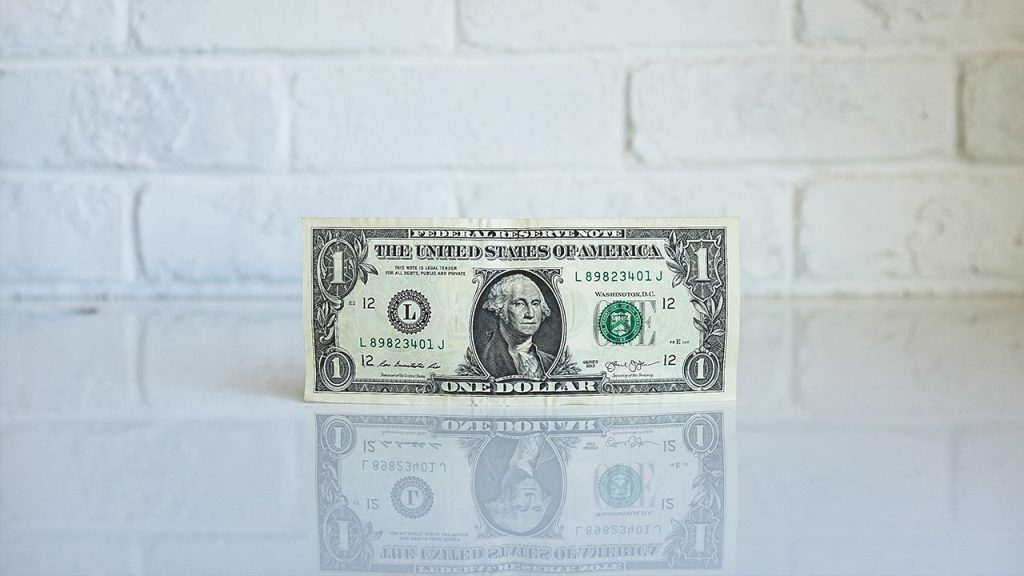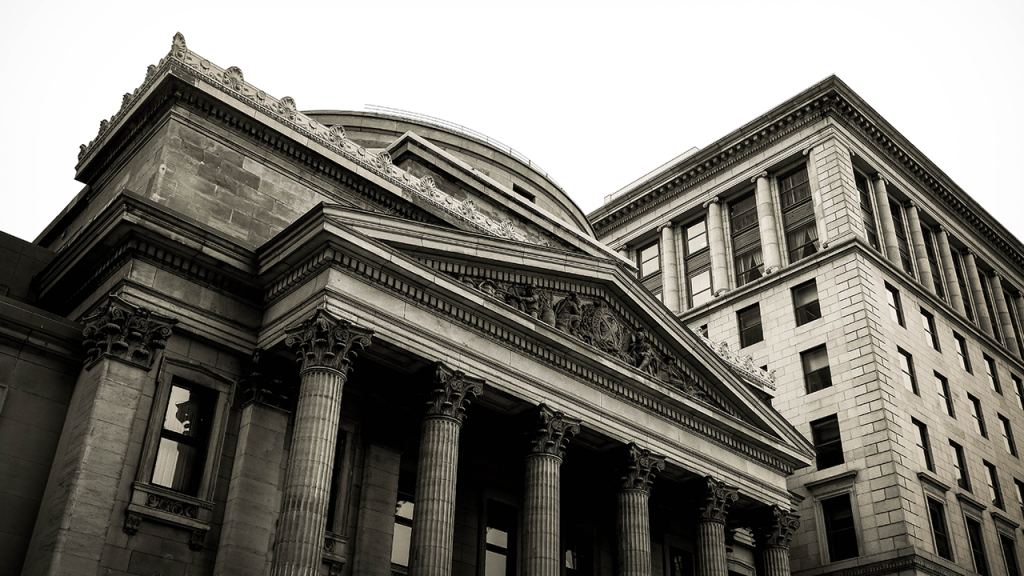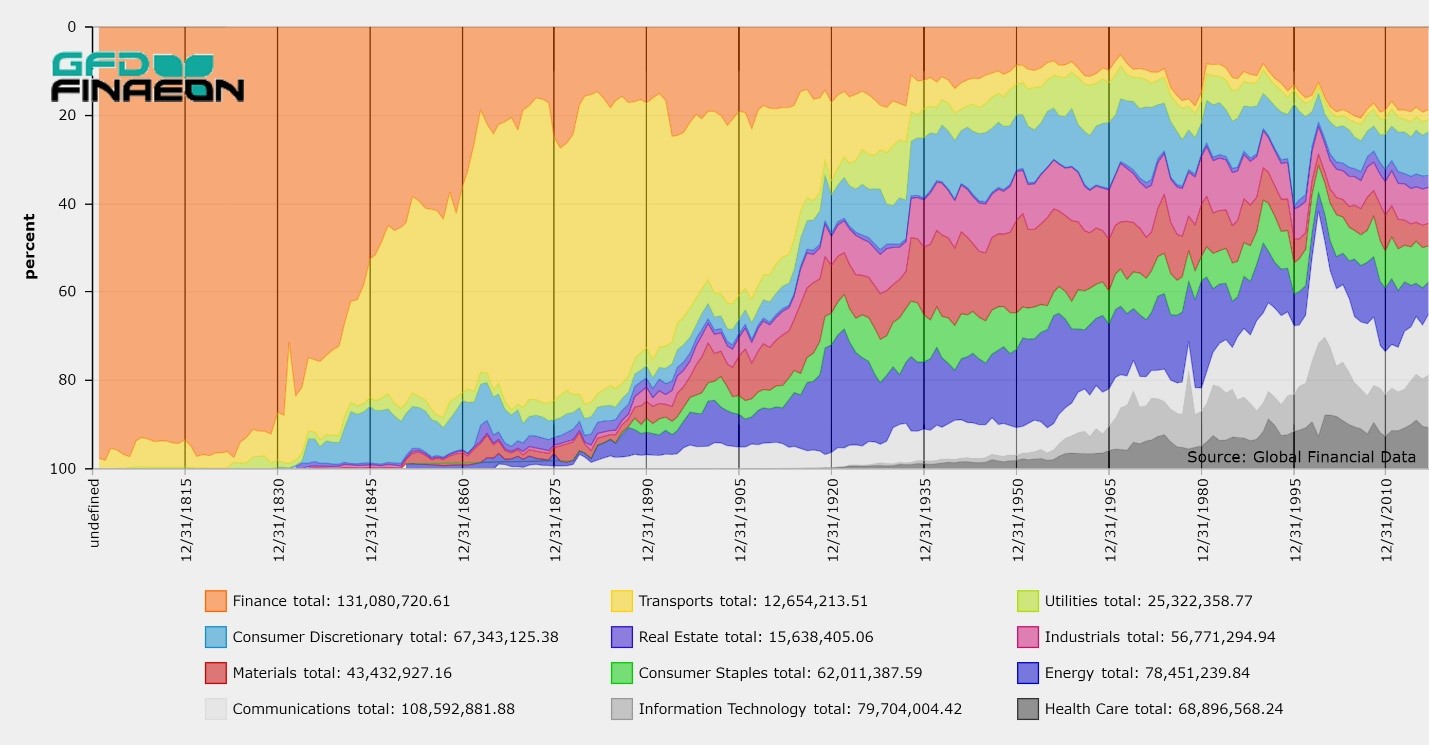 The government is running a large deficit and it can’t cover its expenses. The government debt exceeds the GDP of the country. The central bank’s balance sheet is exploding as the government buys its own debt. Sound familiar? This was France in 1719.
Everyone has heard of the South Sea Bubble, but few have heard of the French version, the Mississippi Bubble, which happened one year before. Not only was the Mississippi Bubble bigger than the South Sea Bubble, but it was more successful. It completely wiped out the French government’s debt obligations at the expense of those who fell under the sway of John Law’s economic innovations.
The Compagnie du Mississippi was chartered in 1684 at the behest of Renee-Robert Cavelier who had been appointed Governor of Fort Frontenac, at the mouth of the Mississippi. After getting his charter, he went to Mississippi with four vessels full of inhabitants, but the venture floundered, and Renee-Robert Cavelier died there, killed by a party that mutinied against him.
In August 1717, Scottish businessman John Law acquired a controlling interest in the then-derelict Compagnie du Mississippi and renamed it the Compagnie d’Occident. The company’s initial goal was to trade and do business with the French colonies in North America, which included much of the Mississippi River drainage basin, and the French colony of Louisiana.
As John Law bought control of the company, he was granted a 25-year monopoly by the French government on trade with the West Indies and North America. In 1719, the company acquired the Compagnie des Indes Orientales, the Compagnie de Chine, and other French trading companies and combined these into the Compagnie Perpetuelle des Indes. In 1720, it acquired the Banque Royale, which had been founded by John Law as the Banque Generale in 1716, and which was the source for the quantitative easing which enabled the government to eliminate its debts.
John Law then schemed to create speculative interest in the Compagnie des Indes. Reports were skillfully spread as to gold and silver mines discovered in these parts. Law exaggerated the wealth of Louisiana with an effective marketing scheme, which led to wild speculation on the shares of the company in 1719. This was the way Gregor McGregor was to generate interest in Poyais one hundred years later.
Law had promised the French regent that he would extinguish the public debt. To keep his word he required that shares in the Compagnie des Indes should be paid for one-fourth in coin and three-fourths in billets d’Etat or public securities, which rapidly rose in value on account of the foolish demand which was created for them. The speculation was further fed by the huge increase in the money supply introduced by John Law in order to stimulate the economy. The South Sea Company and the British government learned from John Law and imitated these techniques in 1720.
The shares traded around 300 at the end of 1718, but rose rapidly in 1719, increasing to 1000 by July 1719, 5000 by August 1719 and broke 10,000 in November 1719, an increase of over 3000 percent in less than one year. By contrast, South Sea Company shares rose by 900 percent in 1720. The Comagnie des Indes shares stayed at the 9000 level until May 1720 when they fell to around 5000. The fall in the price of the stock increased, and at the end of 1720, John Law was dismissed by Regent Philippe II of Orleans.
The government is running a large deficit and it can’t cover its expenses. The government debt exceeds the GDP of the country. The central bank’s balance sheet is exploding as the government buys its own debt. Sound familiar? This was France in 1719.
Everyone has heard of the South Sea Bubble, but few have heard of the French version, the Mississippi Bubble, which happened one year before. Not only was the Mississippi Bubble bigger than the South Sea Bubble, but it was more successful. It completely wiped out the French government’s debt obligations at the expense of those who fell under the sway of John Law’s economic innovations.
The Compagnie du Mississippi was chartered in 1684 at the behest of Renee-Robert Cavelier who had been appointed Governor of Fort Frontenac, at the mouth of the Mississippi. After getting his charter, he went to Mississippi with four vessels full of inhabitants, but the venture floundered, and Renee-Robert Cavelier died there, killed by a party that mutinied against him.
In August 1717, Scottish businessman John Law acquired a controlling interest in the then-derelict Compagnie du Mississippi and renamed it the Compagnie d’Occident. The company’s initial goal was to trade and do business with the French colonies in North America, which included much of the Mississippi River drainage basin, and the French colony of Louisiana.
As John Law bought control of the company, he was granted a 25-year monopoly by the French government on trade with the West Indies and North America. In 1719, the company acquired the Compagnie des Indes Orientales, the Compagnie de Chine, and other French trading companies and combined these into the Compagnie Perpetuelle des Indes. In 1720, it acquired the Banque Royale, which had been founded by John Law as the Banque Generale in 1716, and which was the source for the quantitative easing which enabled the government to eliminate its debts.
John Law then schemed to create speculative interest in the Compagnie des Indes. Reports were skillfully spread as to gold and silver mines discovered in these parts. Law exaggerated the wealth of Louisiana with an effective marketing scheme, which led to wild speculation on the shares of the company in 1719. This was the way Gregor McGregor was to generate interest in Poyais one hundred years later.
Law had promised the French regent that he would extinguish the public debt. To keep his word he required that shares in the Compagnie des Indes should be paid for one-fourth in coin and three-fourths in billets d’Etat or public securities, which rapidly rose in value on account of the foolish demand which was created for them. The speculation was further fed by the huge increase in the money supply introduced by John Law in order to stimulate the economy. The South Sea Company and the British government learned from John Law and imitated these techniques in 1720.
The shares traded around 300 at the end of 1718, but rose rapidly in 1719, increasing to 1000 by July 1719, 5000 by August 1719 and broke 10,000 in November 1719, an increase of over 3000 percent in less than one year. By contrast, South Sea Company shares rose by 900 percent in 1720. The Comagnie des Indes shares stayed at the 9000 level until May 1720 when they fell to around 5000. The fall in the price of the stock increased, and at the end of 1720, John Law was dismissed by Regent Philippe II of Orleans.
 Most stamp collectors are aware of the Great Stock Exchange Forgery that occurred in London in 1872 and 1873, even though most Americans who do not collect stamps are not.
In 1870, the telegraph system of the United Kingdom was nationalized and run by the Post Office. This was useful to people on the stock exchange because without a ticker tape, traders used the telegraph to send stock quotes to customers throughout the United Kingdom.
If someone wanted to send a stock quote, they would go to the telegraph office at the Stock Exchange, write down the information, purchase a stamp generally costing one shilling, depending upon the number of words, then send it off to the customer. The customer would purchase the stamp, put it on the telegraph message, and then have the message sent off, only seeing the actual stamp for a few seconds. The clerk would then cancel the stamp and send off the message.
A fraudulent clerk supplied forged stamps and pocketed the one shilling fee. He used both fraudulent and real stamps so when the actual stamps were audited, none showed up as missing. The stamps were only used on certain days, were convincing forgeries, and the stamps were not retained by the customers who might have noticed the fraud.
Most stamp collectors are aware of the Great Stock Exchange Forgery that occurred in London in 1872 and 1873, even though most Americans who do not collect stamps are not.
In 1870, the telegraph system of the United Kingdom was nationalized and run by the Post Office. This was useful to people on the stock exchange because without a ticker tape, traders used the telegraph to send stock quotes to customers throughout the United Kingdom.
If someone wanted to send a stock quote, they would go to the telegraph office at the Stock Exchange, write down the information, purchase a stamp generally costing one shilling, depending upon the number of words, then send it off to the customer. The customer would purchase the stamp, put it on the telegraph message, and then have the message sent off, only seeing the actual stamp for a few seconds. The clerk would then cancel the stamp and send off the message.
A fraudulent clerk supplied forged stamps and pocketed the one shilling fee. He used both fraudulent and real stamps so when the actual stamps were audited, none showed up as missing. The stamps were only used on certain days, were convincing forgeries, and the stamps were not retained by the customers who might have noticed the fraud.
 One of the principal decisions investors have to make is how to allocate their assets between stocks and bonds. Although stocks generally provide a higher rate of return than bonds, stocks are also more volatile, and investors run the risk that when they need to take money out of their portfolio, stocks might be in a bear market, reducing the amount of money available to them. One of the indicators we look at to determine the optimal allocation between financial assets, is the relative returns between stocks and bonds, and in particular, the 10-year and 20-year rates of return for stocks and bonds. We have found these to be one of the most effective indicators for allocating assets. Five-year rates of return have too much noise in them to provide useful signals, and thirty-year rates are too stable to provide important signals on the relative returns on stocks and bonds. We use the return on the S&P 500 for stocks and the GFD’s index of returns on 10-year government bonds for bonds. As most investors know, stocks generally outperform bonds over time because equities are riskier than bonds and investors must be compensated for this risk with a higher rate of return. However, this is not always true. Occasionally, though rarely, bonds outperform stocks over a period of 10 or 20 years. This only happens once in a generation, and the Financial Crisis of 2008 created one of those rare events. As a result of the financial crisis, for the first time since the 1970s, stocks underperformed bonds over the previous 10 years, and for the first time since the 1940s, stocks underperformed bonds over the previous 20 years. Typically, investors look at the annual returns to stocks, bonds and bills and the volatility of returns to determine the level of risk they face in choosing between assets. In reality, investors don’t look at one-year time periods in making their long-term investment choices, but want to look at periods of ten, twenty or more years in order to prepare for their retirement. Without a long set of data, there is insufficient evidence to make informed decisions about how to allocate investment resources between different asset classes. Global Financial Data has over 150 years of history on the interaction between the 10-year and 20-year returns on stocks and bonds in the United States. This amount of data provides a more realistic view of the information investors need to make long-term investment decisions. The 10-year total returns to stocks and bonds are illustrated in the graph below with stocks represented by the blue line and bonds represented by the red line.
One of the principal decisions investors have to make is how to allocate their assets between stocks and bonds. Although stocks generally provide a higher rate of return than bonds, stocks are also more volatile, and investors run the risk that when they need to take money out of their portfolio, stocks might be in a bear market, reducing the amount of money available to them. One of the indicators we look at to determine the optimal allocation between financial assets, is the relative returns between stocks and bonds, and in particular, the 10-year and 20-year rates of return for stocks and bonds. We have found these to be one of the most effective indicators for allocating assets. Five-year rates of return have too much noise in them to provide useful signals, and thirty-year rates are too stable to provide important signals on the relative returns on stocks and bonds. We use the return on the S&P 500 for stocks and the GFD’s index of returns on 10-year government bonds for bonds. As most investors know, stocks generally outperform bonds over time because equities are riskier than bonds and investors must be compensated for this risk with a higher rate of return. However, this is not always true. Occasionally, though rarely, bonds outperform stocks over a period of 10 or 20 years. This only happens once in a generation, and the Financial Crisis of 2008 created one of those rare events. As a result of the financial crisis, for the first time since the 1970s, stocks underperformed bonds over the previous 10 years, and for the first time since the 1940s, stocks underperformed bonds over the previous 20 years. Typically, investors look at the annual returns to stocks, bonds and bills and the volatility of returns to determine the level of risk they face in choosing between assets. In reality, investors don’t look at one-year time periods in making their long-term investment choices, but want to look at periods of ten, twenty or more years in order to prepare for their retirement. Without a long set of data, there is insufficient evidence to make informed decisions about how to allocate investment resources between different asset classes. Global Financial Data has over 150 years of history on the interaction between the 10-year and 20-year returns on stocks and bonds in the United States. This amount of data provides a more realistic view of the information investors need to make long-term investment decisions. The 10-year total returns to stocks and bonds are illustrated in the graph below with stocks represented by the blue line and bonds represented by the red line.
Several important facts should be noted about this graph. In most cases, increases in the rate of return to stocks at the beginning of each cycle were accompanied by decreases in the rate of return to bonds, as was true from around 1900 to 1930 and from 1940 to 1970. This occurred when nominal interest rates were low at the beginning of a cycle. The period between 1980 and 2005 was different from the other periods because the cycle began when inflation rates, and thus nominal interest rates, were relatively high. Consequently, as inflation and nominal interest rates fell, these changes generated capital gains which increased the long-term return to fixed income investors. Once inflation fell to normal levels, the 10-year return on bonds began to fall. Yields on 10-year bonds have been declining consistently since 1981 which means that over the next few decades, the graph is more likely to look like the 1940s and 1950s than the 1980s. It should also be noted that the 10-year relative returns to stocks and bonds cross over several times before stocks begin to consistently outperform bonds for a period of 25 years or more. Although it is impossible to know the returns this graph will show over the next 30 years, stock returns will probably fluctuate dramatically over the rest of the decade, and during the next bear market, 10-year returns to stocks will temporarily fall below the returns to bonds before rebounding. Nevertheless, the 10-year returns to stocks and bonds have begun to show a divergence which is likely to continue in the future. Below is the graph for the relative 20-year returns on stocks and bonds over the past 150 years. As can be seen, there have only been three times in the past 150 years when bond returns exceeded stock returns over a 20-year period: at the bottom of the bear market in 1932, during 1949, and during the financial crisis in 2009 and 2010. Since long-term bond total returns probably will continue to decline, 20-year stock returns are unlikely to drop below 20-year bond returns again for decades. As is true of the 10-year graph, stock and bond returns are beginning to diverge. Although there is no guarantee financial markets will repeat their past performance, there are several possible implications of this once-in-a-lifetime signal from financial markets.
- Stocks should generally outperform bonds over the next 30 years because a new cycle in the relative rates of return began a year ago.
- When the current bull market runs into trouble sometime in the next few years, the relative 10-year return on stocks will temporarily fall below the return on bonds, but will soon recover.
- The 10-year rate of return on bonds is in long-term decline, and is likely to continue. Because, unlike in the 1980s, inflation rates are not excessively high, during the initial phase of this cycle, long-term return to bonds should decline not only in relative terms, but in absolute terms as well, before reversing about half-way through the cycle.
- At the height of the cycle, stocks will have returned 15%-20% over the previous ten years. This peak should be reached sometime in the 2020s.
- This cycle reinforces the conclusions I made in my paper, Are You Ready for the Bubble of the 2020s which discusses the convergence of long-term factors which favor a strong bull market in the 2020s. The stock market could fluctuate for the rest of the decade before breaking into a secular bull market in the 2020s.
One possible conclusion to draw from these graphs is that long-term investors should consider allocating more of their assets toward stocks, and take advantage of market downturns during the next few years to reallocate money from bonds into stocks. Of course, past performance is no guarantee of future returns, but as anyone who looks at these graphs should realize, events such as these only happen once in a generation.
A previous blogged discussed the founding and dissolution of the First Bank of the United States (BUS) which existed from 1791 to 1811. After the First BUS recharter was defeated, the United States suffered defeat in the War of 1812, and suffered from a lack of fiscal order and an unregulated currency. As industrial and commercial interests expanded after the War of 1812, politicians advocated for the creation of a second Bank of the United States to promote the economy. After the war, there was sufficient support to overcome the opposition to the first BUS. Opponents of a second BUS had seen its charter as not only a threat to the Jeffersonian agrarianism and state sovereignty, but to slavery since, as John Taylor of South Carolina put it, “if Congress could incorporate a bank, it might emancipate a slave.” The bank’s constitutionality had been established in 1819 in McCulloch v. Maryland, a landmark decision in constitutional history, but many still felt the establishment of a bank by the Federal government was unconstitutional. The Bank of the United States would be a depository for collected taxes, make short-term loans to the government, and could serve as a holding site for incoming and outgoing money. The main goal of the bank would to promote commercial and private interests by making sound loans to the private sector. The second BUS charter was signed into law on April 10, 1816 by President Madison. The second BUS was modeled on the first with the government owning 20% of the $35 million in equity, divided into 350,000 shares of $100 each. The bank had 4000 investors of which 1000 were Europeans, though the bulk of the shares were owned by a few hundred wealthy Americans. The second BUS had 25 branch offices in addition to its main office in Philadelphia. After the BUS was established, southern and western branches issued credit to fund expansion. This led to a financial bubble that burst in the Panic of 1819 leading to sharp declines in property prices, much as happened in 2008 when the most recent bank-induced bubble led to a financial crash. The public was unhappy about the prolonged recession that resulted from the BUS-induced Panic of 1819. Nicholas Biddle took over the BUS in 1823, and switched to a sound money policy. At that point in time, state-chartered banks could issue their own currency, but when their currency was deposited at the BUS, the bank would demand gold or silver from the issuing bank, thus controlling and limiting the issuance of currency by state banks. Because the number of banks in the United States grew from 31 in 1801 to 788 in 1837, state-chartered banks began to oppose the BUS because it limited their ability to issue currency and make profits. Shares in the Second Bank of the United States were the most liquid and most secure of all shares listed on US exchanges. The bank paid steady dividends to its shareholders, increasing the dividend from $5 in 1819 to $7 by 1834. Since the US government succeeded in paying off all of its outstanding bonds by 1835, the stock of the Bank of the United States was not only the largest issue on the stock exchange, but it was also the safest since it was backed by the United States Government, or so it seemed.
Jackson’s opposition to the BUS led to the “Bank War” between Jackson and Biddle over the rechartering of the Second BUS. The recharter of the Second BUS became the focal point of the 1832 election. Pro-bank forces tried to get a vote on the charter prior to the 1832 election to discourage a Presidential veto, but anti-bank forces delayed the vote until after the election when Jackson vetoed the recharter, and which Congress failed to override.
Today the battles are over who is appointed Federal Reserve chairperson, not over whether the Federal Reserve should be rechartered. The advocates of hard money and soft money continue to battle over interest rates, quantitative easing, the Federal deficit, funding the government and the other subjects related to the availability of credit. The Bank War was not just part of the 1832 Presidential election, but it is part of every election and almost every battle involving the economy today, and in the future.



